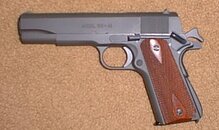Slamfire
Contributor
I'm getting confusing information. TDL says a OMS 112 carries 108 cu ft @ 2640 psi. Huron Scuba says it carries 112 cu ft. Both tables say this cylinder weighs 41 lbs. Faber's website says their 8" diam 41 lb cylinder has 1037 cu in or .6 cu ft internal volume.
2640 psi / 14.7 psi per atm = 179.59 atm
179.59 atm x .6 cu ft internal volume of cylinder = 107.7 cu ft or 108 cu ft.
But the tank's shoulder actually says 112 cu ft, 2400 psi and the "+" which means 10% overfill to 2640 psi. Sooo, which is it, 108 or 112? And why in the world is it so confusing?
All I want is to land on a tank factor. Is it 4.24 cu ft per 100 psi or 4.09 cu ft per 100 psi? May be a should just leave it at 4 flat and chuck whatever is over 4 to conservatism.
2640 psi / 14.7 psi per atm = 179.59 atm
179.59 atm x .6 cu ft internal volume of cylinder = 107.7 cu ft or 108 cu ft.
But the tank's shoulder actually says 112 cu ft, 2400 psi and the "+" which means 10% overfill to 2640 psi. Sooo, which is it, 108 or 112? And why in the world is it so confusing?
All I want is to land on a tank factor. Is it 4.24 cu ft per 100 psi or 4.09 cu ft per 100 psi? May be a should just leave it at 4 flat and chuck whatever is over 4 to conservatism.



 . So 108 cu ft if you're doing recreational diving and 112 cu ft if you're doing technical diving.
. So 108 cu ft if you're doing recreational diving and 112 cu ft if you're doing technical diving.
